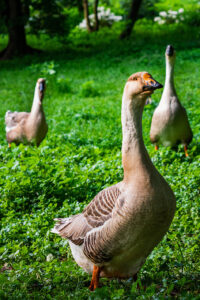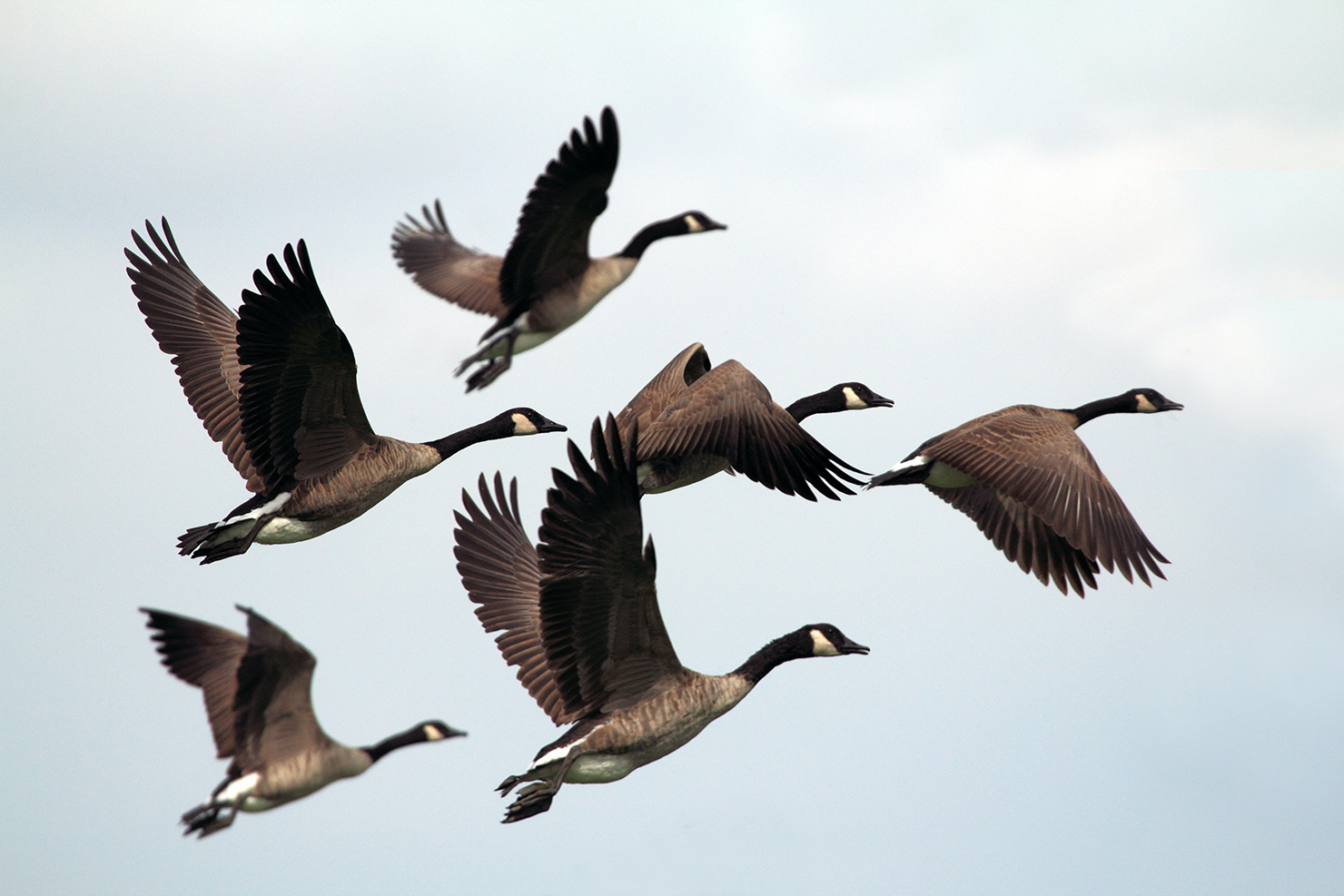Is it possible for humans to learn a thing or two from Canadian geese? Absolutely! I have lived many years alongside geese as my neighbors and despite being loud and quarrelsome, they are very entertaining neighbors. Their ongoing brawls inspired me to write my first children’s book, The Day the Goose Squabble Stopped.
The two main characters Nellie and Willie are illustrated as whimsical geese and act like, well, silly gooses. They sure know how to ruffle each other’s feathers! Interwoven throughout The Day the Goose Squabble Stopped are three core ideas and these themes are what I wish to elaborate on.

Tolerance and Respect
The first core idea is about tolerance and respect. The story begins with Nellie & Wille and describes their mean-spiritedness towards each other. Their nastiness, due to a faulty belief of differentness, leads them to fight over their claimed area on Little Puddle Pond where they live. Once they staked their spot on the pond, they protected it all costs and never once considered that the pond could be shared.
By the story’s end, Nellie and Willie recognize just how alike they are. I would hope, their conclusion is one we all eventually arrive at. Even though we may look, act, and believe differently from one another, we share the sacred experience of living all together on earth at this moment in time.
We are more alike than different. If we continue to only focus on our differences based upon appearances, actions or beliefs then the fracture already evident in our country widens into an even greater divide.
We must remain vigilant to check conditioned, knee-jerk reactions about the “other” which often just conveys more about our own fears and judgements. We need to be mindful of our fears as they arise towards anyone we perceive as different.
If we want our neighborhoods to model inclusiveness as populations grows more diverse, then we need to dig deep within our own selves and look honestly at our orientation to the “other.” If we can do this, then we can be better role models to teach our children how to be tolerant and respectful to help bridge the gaping divisions between us.
This is a dedicated commitment to teach our children, by our words and actions, how not to judge others based upon perceived differences. Teaching tolerance can’t be taught if we ourselves don’t tolerate others in our neighborhoods.
Teaching tolerance is a good first step; however, it will not be enough. Tolerance equates to putting up with someone’s opinions or behaviors that we don’t agree with. Respect will also need to be taught for respect goes one step further. Others must be treated with civility and respect even if we are not comfortable with their choices and beliefs that are different from our own.
We Need Each Other
The second core idea of my book is that creative solutions are possible when we work together to solve problems. Teamwork enhances the effort to find creative, innovative solutions to problems. We can share ideas to get the best results to address the myriad of problems we face.
Thanks to a shared concern about a mutual friend, Bruce the Goose, Nellie and Willie set aside their differences. They worked together as a team because Nellie was wise enough to know she couldn’t solve Bruce the Goose’s problem alone. Both of their skills were required to free Bruce the Goose from the muddy mess he was stuck in.
Once Bruce the Goose was rescued, Nellie and Willie within close proximity of each other for the first time ever, were able to “see” that their perception of differentness was false. Their minds were opened and no longer stuck perceiving only their differentness.
Fulfill Your Purpose by Sharing Your Gifts
The third core story idea in my book is to teach your child that they have a gift to share with the world. My belief: we are each created to fulfill a purpose and are here to help others in need. Help your child recognize and encourage their unique gift or skill. Then teach your child to be on the lookout for ways in which they can offer help.
Unfortunately, Nellie and Willie used their skills against each other. Nellie’s ominous hiss kept Willie at bay away from “her” side of the pond. Willie perfected the “two-web-foot-goose kick” and pushed Nellie away from “his” side of the pond.
When these silly gooses purposefully choose to set aside their squabbles, they became allies. Together, the skills they honed – Nellie’s “force of her fierce hissy strength” and Willie’s “formidable feet of strength” – saved Bruce the Goose from his sticky dilemma.
 What Unites Us is Stronger Than What Divides Us
What Unites Us is Stronger Than What Divides Us
The Day the Goose Squabble Stopped can be a story springboard to discuss with a child the importance of tolerance and respect; the value of teamwork to solve a problem; a gift or skill one possesses is just what might be needed to help another. All worthwhile values to instill in a child.
As a parent, grandparent, and minister, I like many, have growing concerns about how divided our society has become. If we want to teach and model to children to accept those perceived differently from ourselves then we have our work cut out for us. We need to show children how to be open-hearted, non-judgmental and extend kindness. This is the great work of our time. We need to emphasize what unites us instead of what divides us and strive for connections.
Everyone to a certain extent has felt or has been treated like the “other” – a marginalized outsider without a sense of belonging. To create a better world for our children where everyone will thrive and no one is excluded, our neighborhoods must build communities that welcome diversity, celebrates differences, extends respect to all and helps those in need.
To achieve this ideal version of neighborhoods, take an honest look within in order to better understand where you can grow into more open-heartedness and extend kindness with all those you encounter.
Mary Ellen Lucas is an Interfaith / Interspiritual minister, and the author of two children’s pre-chapter books The Day the Goose Squabble Stopped and The Goslings Learned to Listen.







